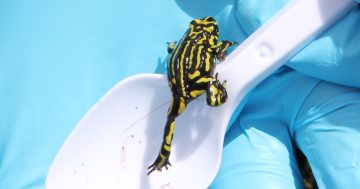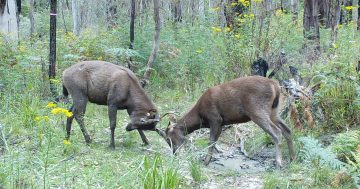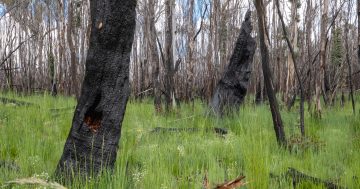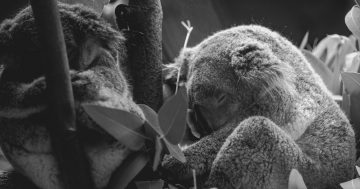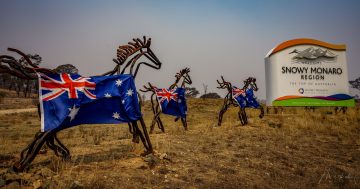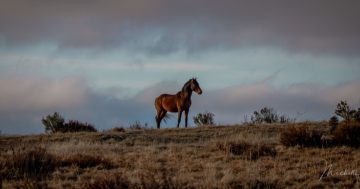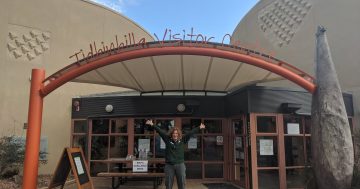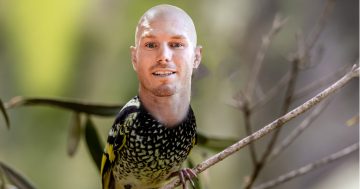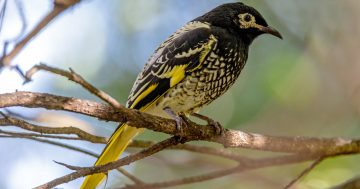
The diminutive northern corroboree frog sizes up this plastic spoon. Photo: Namadgi National Park.
There’s thought to be fewer than 50 in the wild, largely confined to the waterlogged grasslands and forests of the Brindabella and Bimberi mountain ranges. But efforts to bring the northern corroboree frog back from the precipice of extinction are off to a promising start.
Over the past two years, 700 of the critically endangered frogs have been released into a new site within Namadgi National Park. They’re now bred to resist their biggest killer.
The northern corroboree frog (Pseudophryne pengilleyi) measures 2.5 to 3 cm with bright yellow-green and black stripes on its upper surfaces and a marbled underside of black and white or black and yellow.
They were once abundant, but populations have declined sharply over the past 20 years largely due to disease caused by the introduced ‘amphibian chytrid fungus’.
The fungus attacks a frog’s skin where keratin exists (in parts of their body exposed to wear and tear such as hands, feet and legs). Since frogs use their skin in respiration, this makes it difficult for them to breathe.
A captive population was established at Tidbinbilla Nature Reserve in 2003 from eggs collected in the wild. Some of these have been released into Namadgi National Park since 2020.
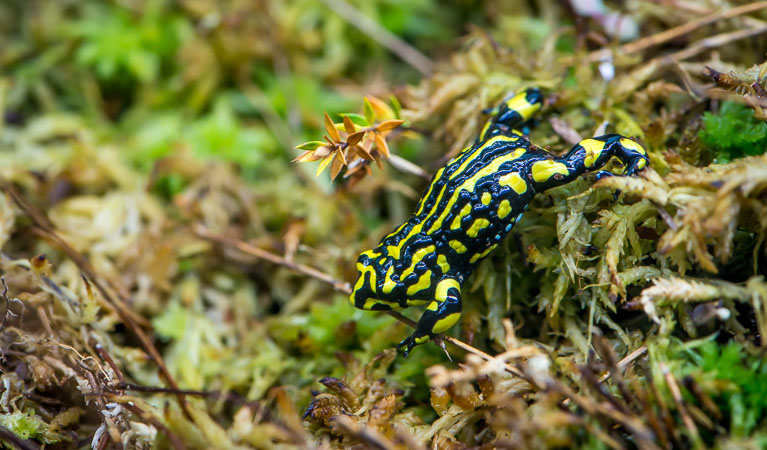
The southern corroboree frog in Kosciuszko National Park. Photo: NSW National Parks.
The project, a joint-effort between the ACT Government and Australian National University (ANU), is already showing signs of success.
Minister for the Environment Rebecca Vassarotti said they were “cautiously optimistic”.
“The introduced frogs are in excellent condition and breeding, indicating they have all the resources they need to thrive,” she said.
“This persistence is despite the presence of chytrid fungus, which is everywhere. These positive results could indicate this site allows the frogs to survive despite the presence of the fungus.”
The species hasn’t historically been found at the location in Namadgi National Park. But the habitat was assessed as suitable for the “assisted colonisation” method.
“Meaning they get a bit of a helping hand from us just to get there,” Ms Vassarotti said.
ANU researcher Ben Scheele said the northern corroboree frog was one of Australia’s most iconic threatened species.
“Our innovative methods for establishing wild populations are underpinned by long-term monitoring and research, and provide hope for this species and others like it in Australia and globally that are threatened by chytrid fungus.”
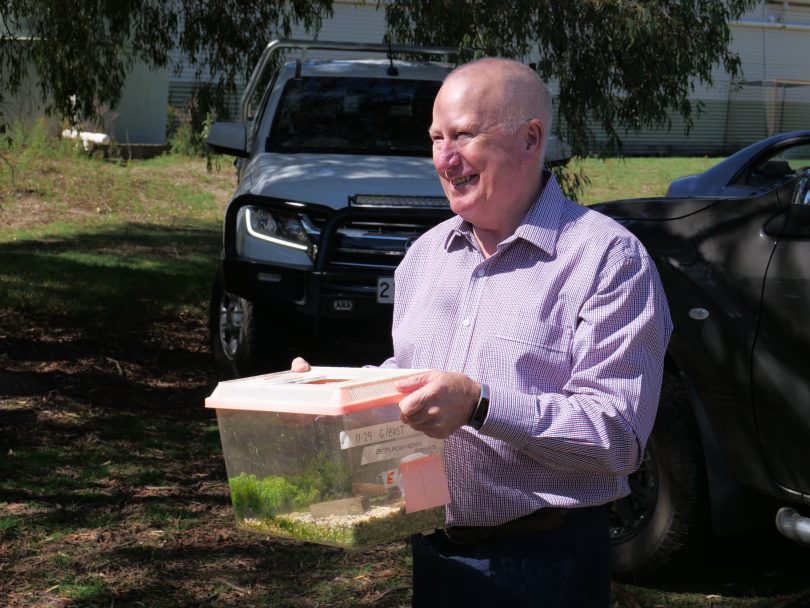
Mick Gentleman carefully cradles a corroboree frog. Photo: Supplied.
Minister for Planning and Land Management Mick Gentleman said ecologists from across the ACT Government had been working in partnership with ANU researchers on the conservation project.
“The captive breeding program at Tidbinbilla Nature Reserve is responsible for generating animals for release, including genetic management, and ensures there is an insurance population of frogs into the future,” Mr Gentleman said.
He said the ACT Government would continue to work with the ANU to secure the future of the frogs in the ACT.
The next step in the recovery program is the construction of five outdoor enclosures at Tidbinbilla. These will enable northern corroboree frogs to be raised and bred in conditions that more closely resemble their natural habitat in woodlands and sphagnum moss bogs.











